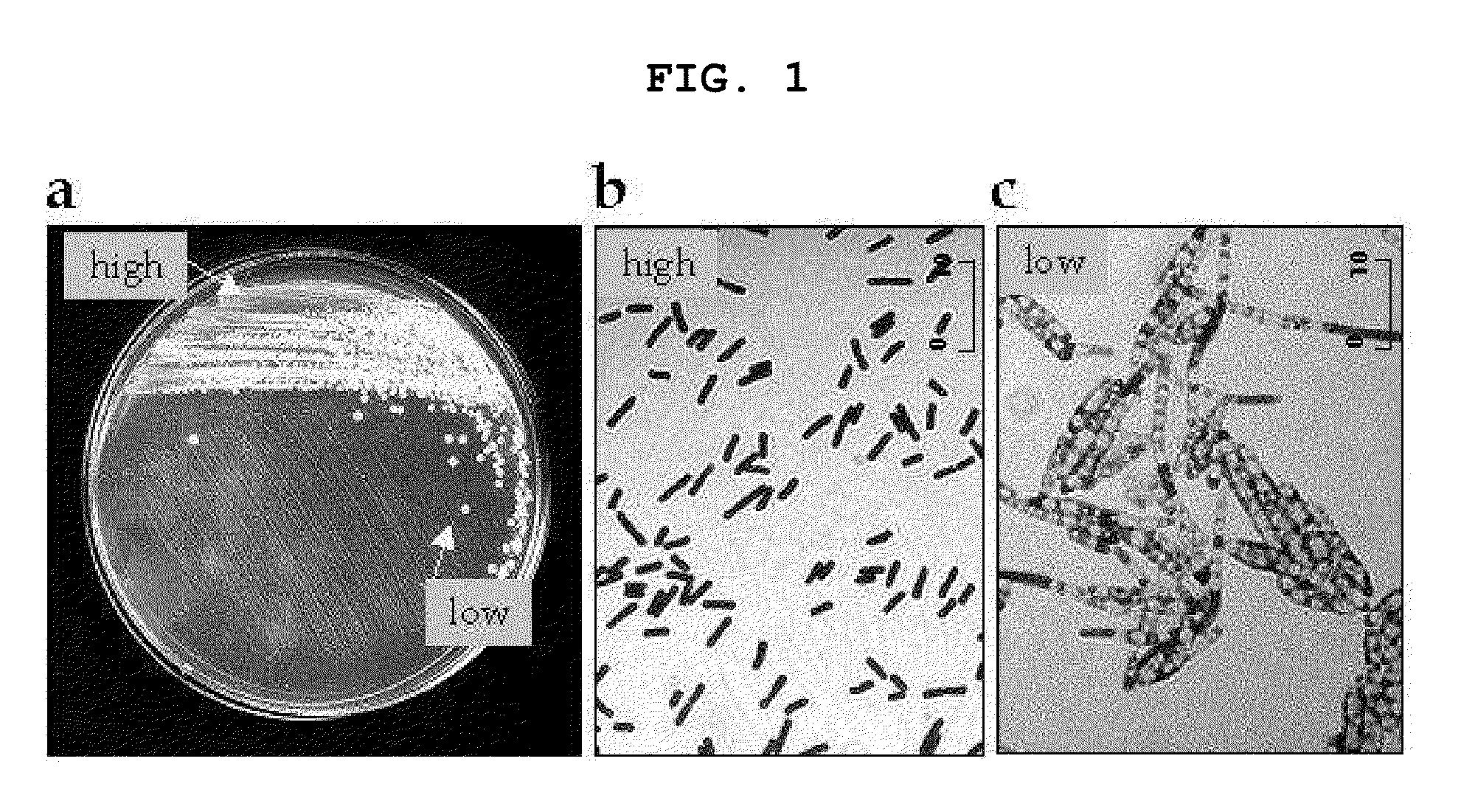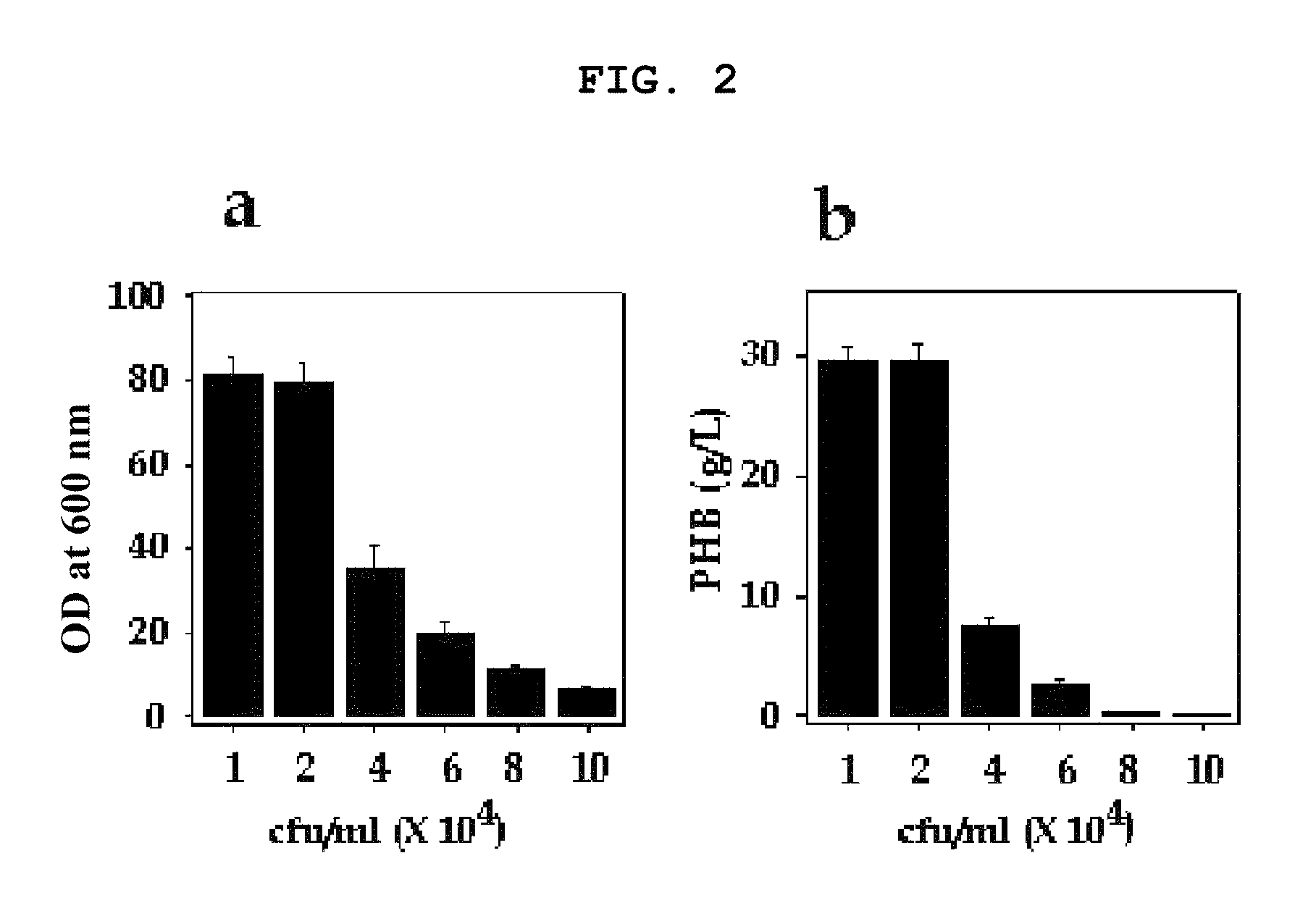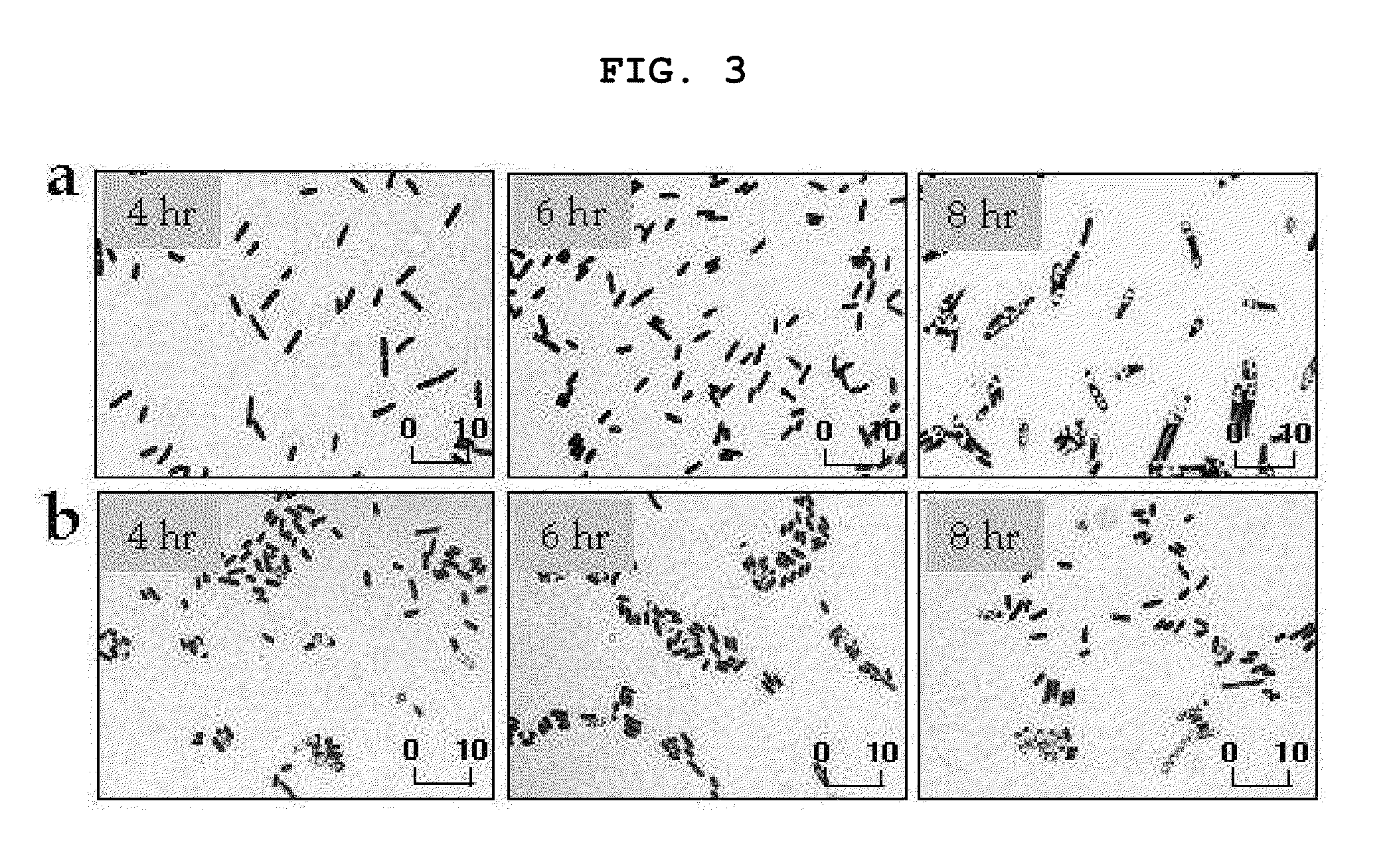Method of overproduction of polyhydroxybutyrate
a technology of polyhydroxybutyrate and overproduction method, which is applied in the field of recombinant escherichia coli and an overproduction method of polyhydroxyalkanoate, can solve the problems of limited use of pha, waste disposal problems and even threats to human beings, and facilitate the overproduction of phb, simplifying culture processes, and facilitating industrial use of phb
- Summary
- Abstract
- Description
- Claims
- Application Information
AI Technical Summary
Benefits of technology
Problems solved by technology
Method used
Image
Examples
example 1
Preparation of a Transgenic E. coli Strain Harboring PHB Gene and Stock Seeds
Preparation of a Plasmid and a Transgenic E. coli Strain
[0084]Plasmid ‘pTZ18U-PHB’ harboring phbCAB gene was distributed from professor Jung Kuk Lee, Sogang University, Seoul, Korea, who had kept the plasmid previously provided from Dr. Alexander Steinbuchel, Munster University, Germany. phbCAB gene is composed of phbC gene, phbA gene and phbB gene and a sequence of each gene is represented by SEQ ID NO: 1, SEQ ID NO: 2 and SEQ ID NO: 3, respectively.
[0085]Wild type strain MG1655 (CGSC, Coli Genetic Stock Center, Yale University, CT, USA), an inducible strain of E. coli K-12, was used as a host strain. The strain was transformed by pTZ18U-PHB plasmid according to a conventional method using CaCl2 (Sambrook, J. and Russell, D. W., Laboratory Press. Cold Spring Harbor, N.Y. 2001). The transformant was streaked onto LB / amp agar plate and the growing strains on the plate were selected as final transformants.
P...
example 2
Effects of Initial Inoculum Size on PHB Production
Colony Formation According to Initial Inoculum Size
[0088]When recombinant E. coli MG1655, a host strain, containing pTZ18U-PHB plasmid prepared in the above example was streaked onto LB / glucose 7% / amp agar plate, two types of colonies were visualized. The one in the “high” region whose inoculum size was high and cells were very close together, showed a representative brown color of E. coli. The other in “low” region, whose inoculum size was low and cells were apart from each other, showed a white-opaque color (FIG. 1a). While no intracellular PHB was found in the cells of “high” region, a large amount of PHB existed in the cells of “low” region (FIG. 1b and FIG. 1c).
PHB Production According to Initial Inoculum Size
[0089]In order to confirm if PHB production observed above was affected by initial inoculum size, the present inventors investigated PHB accumulation under various inoculum sizes ranging 104˜105 cells / ml (FIG. 2). Intrac...
example 3
Cell Number and Preparation of Capable Cells
[0091]In order to verify that low inoculum size was advantageous to PHB production, the present inventors investigated changes in cell morphology and patterns of PHB accumulation, during the early stage of cell growth, by light microscopy (FIG. 3). As a result, PHB was visualized after 8 hour of cultivation with a low inoculum size (104 cells / ml) On the contrary, although PHB accumulation was shown at an early culture time (after 4 hour of cultivation) with a high inoculum size (105 cells / ml), cells producing PHB or not were mixed together at that time.
[0092]This phenomenon was reflected in optical cell density (FIG. 4a). The initial OD (reflecting cell growth) with a high inoculum size was higher (0˜6 hour of cultivation) than that with a low inoculum size, but OD of low inoculum size became higher after 8 hour of cultivation. This reversion resulted from effective PHB accumulation in the low inoculum size.
[0093]In order to re-confirm the...
PUM
| Property | Measurement | Unit |
|---|---|---|
| concentration | aaaaa | aaaaa |
| volume | aaaaa | aaaaa |
| size | aaaaa | aaaaa |
Abstract
Description
Claims
Application Information
 Login to View More
Login to View More - R&D
- Intellectual Property
- Life Sciences
- Materials
- Tech Scout
- Unparalleled Data Quality
- Higher Quality Content
- 60% Fewer Hallucinations
Browse by: Latest US Patents, China's latest patents, Technical Efficacy Thesaurus, Application Domain, Technology Topic, Popular Technical Reports.
© 2025 PatSnap. All rights reserved.Legal|Privacy policy|Modern Slavery Act Transparency Statement|Sitemap|About US| Contact US: help@patsnap.com



